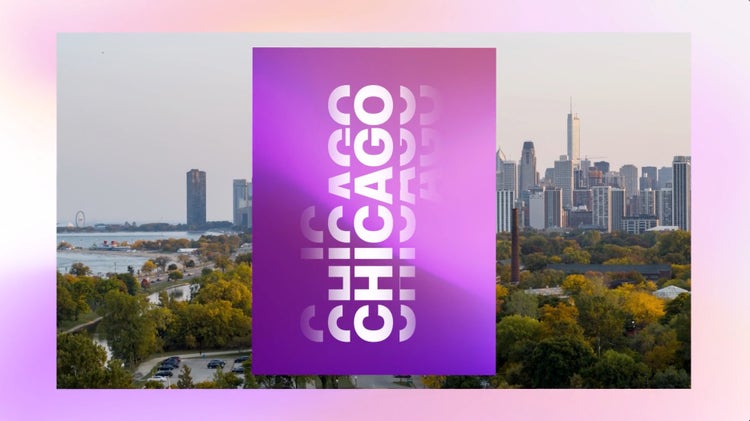Accenture Productions takes video to a new level with Adobe Creative Cloud

Demand for digital content has grown steadily over the past decade, but the pandemic accelerated this trend dramatically as businesses shifted to virtual events and digital outreach nearly overnight. It was no different at Accenture, where teams have been using digital spaces to connect with clients and promote thought leadership around the world.
Much of this digital work is handled by Accenture Productions, the video and broadcast group within Accenture. Over the past six years, the team’s workload has risen dramatically as demand has grown for videos, live broadcasts, pre-recorded events, and much more.
“In the past year, our team handled 250 live broadcasts or recordings a month plus another 120 editing projects,” says Mark Yoder, content strategy and operations lead at Accenture Productions. “Demand has really grown as our people are looking for new ways to approach virtual events. We not only have to address evolving content requirements but also keep global teams aligned to complete projects as quickly as possible.”
To meet demand, Accenture Productions needs to work with technologies and solutions that readily support developing and delivering impactful content that meets Accenture’s high standards. At the same time, tools have to promote seamless collaboration across internal and external teams for maximum efficiency. As an Adobe Platinum Partner, teams across Accenture rely on Adobe Creative Cloud apps for creative projects.
“We use Adobe Creative Cloud apps every day, from live broadcast events to initial storyboarding,” says Shanae Paulus, creative director in Accenture Productions. “The apps enable us to deliver rich, relevant content at the speed our clients need.”

Kickstarting designs with Adobe Stock
All Accenture Productions team members, including designers, motion graphics artists, editors, and producers, work with Adobe Creative Cloud apps. Many projects start with a mood board created by looking to Behance for inspiration and then pulling Adobe Stock images and illustrations. The mood board helps align expectations with the client for the content and tone for any video or production. Designers then expand on the mood board by creating storyboards in Adobe InDesign.
Artists step in next, creating collateral in Adobe Photoshop and Adobe Illustrator. Many of the designs start with images pulled from Adobe Stock.
“Working with Adobe Stock is a huge timesaver when you’re juggling half a dozen projects,” says Paulus. “I’ll find an Adobe Stock image that fits with my idea and use that as a base design. It saves me hours of work so that I can focus time on those important creative details instead of building everything from scratch.”
Accenture Productions creative producer Scott Fleming agrees, adding that Adobe Stock has distinct advantages like filtering tools,” says Fleming. “I can filter aspects like color or depth of field. If I find an image that’s close, but not quite right, I can use the Find Similar function to quickly drill down and find exactly what I want.”
Seamless online video reviews
Designers’ images are passed on to motion graphics designers and animators who create videos using Adobe Premiere Pro and Adobe After Effects. Once a rough cut is complete, Accenture Productions uses the Frame.io extension in Adobe Premiere Pro to share work with clients and stakeholders for review.
“Frame.io is great for reviews because clients can draw and comment directly on the video,” says Paulus. “We don’t need to coordinate meetings to screenshare videos or sort through emails trying to match comments with timestamps. All of the feedback is collected through Frame.io in Premiere Pro.”
“The ability to compare versions in Frame.io is a lifesaver when working on video,” adds Fleming. “It means I can look at two versions of the video side by side and make sure that all of the feedback made it into the latest version.”
Learn about how Frame.io works in Premiere Pro and After Effects.
Connecting with remote collaborators
As designers and concept artists build out the project, they also take advantage of Creative Cloud Libraries to create a central hub for approved or complete assets. No matter where creatives are working, they can find the latest versions of images, vectors, and other elements in the Library. This eliminates the time and potential confusion of emailing the latest version of elements to collaborators.
“A designer in Chicago might create an element in Adobe Illustrator, then upload it to the Creative Cloud Library where it’s instantly available for a motion graphics artist in Dublin,” explains Fleming. “It keeps assets organized and streamlines collaboration, which is perfect for our global team.”
While Accenture designers have only started exploring Adobe Substance, the potential to add 3D elements to the pipeline excites the team. The use of 3D will allow Accenture Productions to expand into virtual reality and metaverse events in the future.
Putting the focus on the Midwest
While Accenture is a multinational brand, it also embraces local communities and markets to better serve clients and connect with audiences. The Accenture marketing + communications team covering the Midwest region of the United States asked Accenture Productions to collaborate on a collection of videos that would celebrate Accenture’s brand presence and close community ties for the ten biggest markets, such as Chicago, Minneapolis, and Detroit.

“The idea was that each of the videos would be a love letter from Accenture,” explains Yoder. “We wanted to make sure that we captured the unique qualities that make each city such a great place to work and live. But we also wanted to templatize the project to some extent to gain efficiencies.”
The result was a standard template that included large sections where copywriters and designers could remix the narration and visuals to capture the heart of each community. Adobe Stock was particularly helpful for designers who needed to find a wide variety of iconic images and video for each city.
“Adobe Stock has a detailed metadata, which saved us a lot of time during our search,” says Fleming. “I could search for keywords from the script, or phrases like ‘Detroit landmark’. It was almost like a research tool because Adobe Stock would show me people and places that really captured the community we were trying to highlight.”
“Our leaders are always telling us that we need to create amazing content and tell stories,” says Paulus. “And for us to be able to do that, we need to empower creators with the right tools. Adobe Creative Cloud allows us to stay ahead of the curve and concentrate on the creative storytelling that connects audiences everywhere.”
Learn more about working with Adobe Creative Cloud.